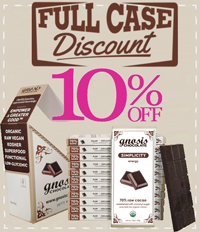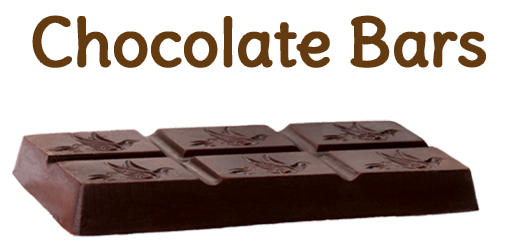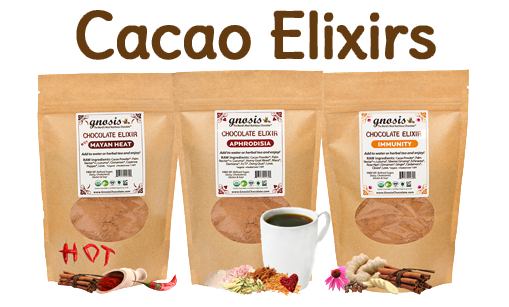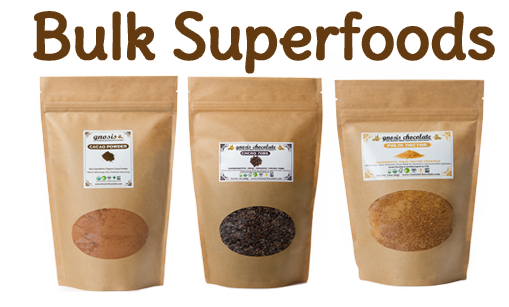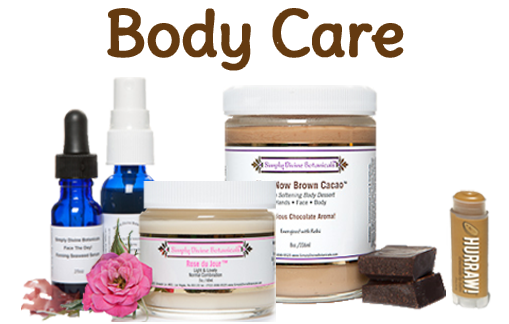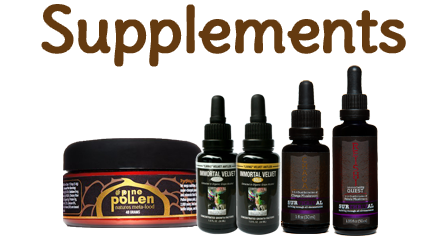FAQ > Ingredients & Nutrition! > Nutrition Facts? Calories?
Still have questions? Please don't hesitate to email or call (646) 688-5549!
Search the FAQ for entries containing:
 |
 |
 |
 |
 |
 |
 |
 |
 |
 |
 |
 |
 |
Our chocolate is lower in calories, sugars, and fats ... and higher in antioxidants, neurortransmitters, and other nutrients than most chocolate bars on the market. We don't call it the World's Healthiest Chocolate for nothing!
By sweetening with coconut sugar instead of cane sugar, even diabetics do very well eating Gnosis products! Coconut sugar has a glycemic index of 35 vs cane sugar's 63, so our chocolate will not spike your blood sugar. In fact, the sugars from coconut palm release more slowly than in many fruits.
We do not add dairy to any of our products, which means they will not negatively impact your cholesterol as milk chocolate would. The fats in chocolate are the same ones found in coconuts, nuts, avocados, etc. (stearic acid, omega 9, and palmitic acid) and are known to actually reduce cholesterol.
We were shocked to learn that many companies generate their nutrition panels in PhotoShop. At Gnosis, we work directly with RL Food Testing to ensure the highest integrity in our nutrition fact panels! But when using Nutrition Fact Panels to guide your dietary habits, please remember - a calorie is not just a calorie: http://www.prevention.com/weight-loss/weight-loss-tips/healthy-foods-boost-metabolism
Because my main interest is nurturing your health, I am 100% committed to putting a healthFUL product on the market - not just one without the UNhealthy ingredients. Any calories in my bar are loaded with nutrients - vitamins, minerals, and neurotransmitters... that's why it is classified as a superfood.
Warmly,
Vanessa

| dark chocolate | 13,120 | strawberries | 1,540 | |
| milk chocolate | 6,740 | spinach | 1,260 | |
| prunes | 5,770 | raspberries | 1,220 | |
| raisins | 2,830 | brussel sprouts | 980 | |
| blueberries | 2,400 | plums | 949 | |
| blackberries | 2,036 | alfalfa sprouts | 930 | |
| kale | 1,770 | broccoli | 890 |
"Not only were trans fats conspicuously absent from the fatty acid analyses, data on other lipids made no sense at all. Even foods containing no trans fats were listed with faulty fatty acid profiles. For example, safflower oil was listed as containing 14% linoleic acid (a double bond fatty acid of the omega-6 family) when in fact it contained 80%; a sample of butter crackers was listed as containing 34% saturated fat when in fact it contained 78%. In general, the NHANES II data base tended to minimize the amount of saturated fats in common foods." (source: coconutoil.com)
Last updated on January 7, 2014 by Vanessa Barg

